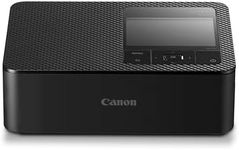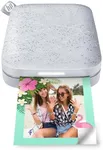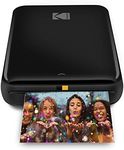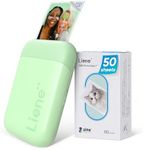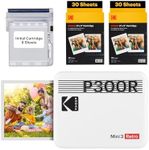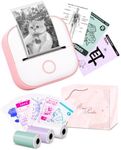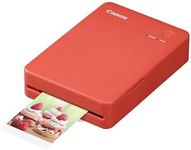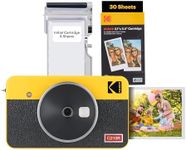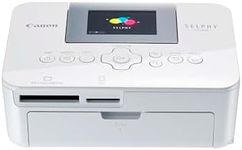Buying Guide for the Best Mini Photo Printers
Mini photo printers are compact devices that allow you to print photos directly from your smartphone or other digital devices. They are perfect for those who love capturing moments and want to have physical copies of their photos instantly. When choosing a mini photo printer, it's important to consider several key specifications to ensure you get the best fit for your needs. These specifications will determine the quality, convenience, and overall experience of using the printer.Print QualityPrint quality is determined by the resolution and color accuracy of the printer. It is important because it affects how sharp and vibrant your printed photos will look. Print quality is often measured in dots per inch (DPI). Higher DPI values, such as 300 DPI or more, generally mean better quality prints with more detail and color depth. If you plan to print photos for keepsakes or gifts, opt for a higher DPI. For casual use, a lower DPI might suffice.
Print SizePrint size refers to the dimensions of the photos that the printer can produce. This is important because it determines the size of the physical photo you will get. Common print sizes for mini photo printers include 2x3 inches and 3x4 inches. If you prefer wallet-sized photos, a 2x3 inch printer might be ideal. For slightly larger prints, consider a printer that offers 3x4 inch options. Choose based on how you plan to use or display your photos.
ConnectivityConnectivity options determine how you can connect your devices to the printer. This is crucial for ease of use and compatibility with your devices. Most mini photo printers offer Bluetooth or Wi-Fi connectivity, allowing you to print directly from your smartphone or tablet. Some may also support USB connections. If you want the convenience of wireless printing, look for models with Bluetooth or Wi-Fi. Ensure the printer is compatible with your device's operating system.
PortabilityPortability refers to the size and weight of the printer, which affects how easy it is to carry around. This is important if you plan to take the printer with you on trips or events. Smaller, lighter printers are more portable and can easily fit into a bag or backpack. Consider how often you will need to transport the printer and choose a size that fits your lifestyle. If portability is a priority, opt for a compact and lightweight model.
Battery LifeBattery life indicates how long the printer can operate on a single charge. This is important for uninterrupted printing, especially when you're on the go. Battery life can vary significantly between models, with some offering only a few prints per charge and others providing dozens. If you plan to use the printer frequently or in places without easy access to power, look for a model with a longer battery life. Consider how many prints you typically need in one session.
Print SpeedPrint speed refers to how quickly the printer can produce a photo. This is important if you need to print multiple photos in a short amount of time. Print speed is usually measured in seconds per print. Faster print speeds, such as 30 seconds or less per photo, are ideal for events or gatherings where you want to share prints quickly. If speed is not a major concern, a slower printer might be acceptable. Consider your patience and the context in which you'll be printing.
Cost of ConsumablesThe cost of consumables includes the price of paper and ink or cartridges needed for printing. This is important for understanding the ongoing expenses associated with using the printer. Some printers use special paper with embedded ink, while others require separate ink cartridges. Consider how often you plan to print and calculate the cost per print to ensure it fits within your budget. If you print frequently, look for models with more affordable consumables.


